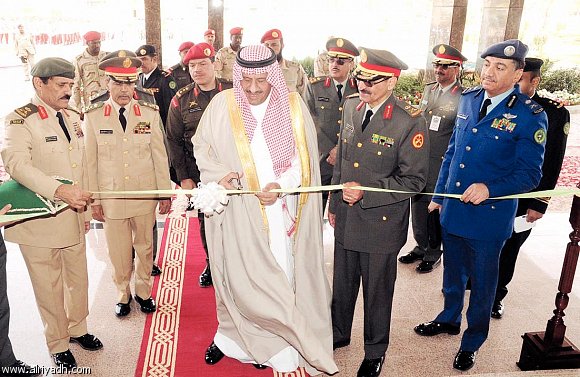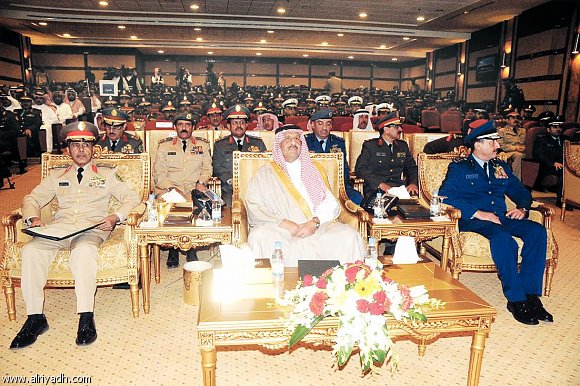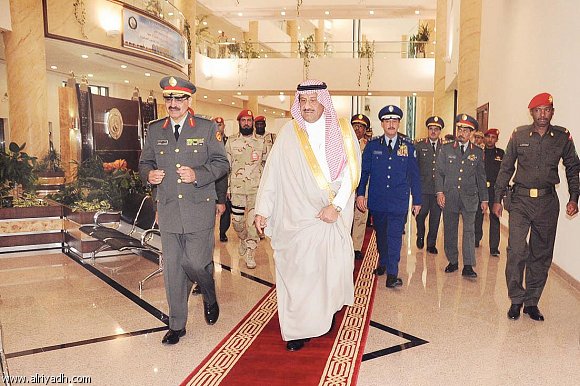saudi missile claims
by jeffrey | 8 june 2010 | 12 comments
a former intelligence contractor is claiming that china finally got around to selling saudi arabia some new missiles to replace the ones it bought two decades ago. Jonathan scherck decided he couldn’t wait for classification review and has been emailing a self-published manuscript to members of congress and jeff stein, who runs the washington post’s spy talk blog:
“i believe the people’s republic of china delivered a turn-key nuclear ballistic missile system to the kingdom of saudi arabia over the course of several years beginning no later than december 2003,” writes jonathan scherck in a self-published book, “patriot lost,” which he provided to spytalk on monday.
[snip]
scherck, who became convinced that the white house was covering up the china-saudi nuclear connection so as not to damage relations with a major u.s. Ally and oil supplier, said he formed his conclusions while reading intelligence reports from riyadh during his 18 months on “the saudi account” in the near east division between 2005 and 2007, as well as talking with other cia personnel in contact with the bush white house.
I’ve wasted the better part of a day on a long post (see below).
Apart from my annoyance at the phrase “nuclear ballistic missile” — this ain’t timberwind, pal — the bottom line is, sure, the saudis were eventually going to get around to buying a replacement system for the decrepit css-2 (df-3) ballistic missiles they bought from china more than two decades ago. That doesn’t have anything to do with nuclear weapons, which i don’t believe for a second the chinese sold saudi arabia.
I am not sure a chinese conventional ballistic missile sale to saudi arabia is a big deal. It is an interesting data point that would have made a nice new yorker article — what, you can’t leak to sy hersh like everyone else? — but probably not worth getting fired over and certainly not worth opening yourself up to criminal prosecution.
Who is jonathan scherck?
Eh, beats me.
According to stein, scherck “joined the cia in 2004 but quit before finishing the agency’s rigorous clandestine career training course, in november of that year. He then joined spectal, a reston, va.-based intelligence contractor, which assigned him to the cia as a collection management officer on the saudi desk.”
so, he’s a beltway bandit. Or at least was one — he was “fired” he told stein, “because of my continued interaction with the” national geospatial intelligence agency.
Scherck appears to have a barebones facebook page, as well as two (1 | 2) linkedin accounts, one of which describes him as a “former u.s. Naval officer, intelligence community contractor and small business owner now working as a freelance writer.”
the two press releases (1 | 2) are hysterical (in both senses), not terribly enlightening and suggest a limited ability to distinguish between missiles and nuclear weapons.
They do not help the credibility of the author.
Is it plausible?
Yeah, sure. Well, the part about china selling missiles to saudi arabia to replace the ones they sold them in the late 1980s. I’d be awfully surprised if they were nuclear-armed.
In 1988, the united states discovered that china had sold saudi arabia css-3 (df-3) ballistic missiles. This triggered a brief moment of panic about whether the missiles came with matching nuclear weapons, though china apparently converted the missiles to carry conventional high explosives. Still, saudi arabia’s purchase kicked off a discussion of just what the hell they were up to. (the best account, i think, is khaled bin sultan with seale, desert warrior, pp. 138-41. The author, bin sultan, arranged for the purchase of the missiles.)
as china’s liquid-fueled css-2 (df-3) ballistic missiles have reached the end of their service life, china has replaced them with nuclear and conventionally-armed solid-fueled css-5 (df-21) ballistic missiles. It is hardly surprising, then, that saudi arabia might seek to do the same thing.
The saudi armed forces chief of staff was pretty up front about saudi arabia’s interest in replacing the css-2 missiles in a 1997 interview with defense news. When khaled bin sultan made a visit to beijing in 1999 to discuss “upgrading previous military purchases”, ap reported it as a trip about replacing the kingdom’s ballistic missiles.
By january 2001, upi’s richard sale quoted anonymous us officials stating that saudi arabia was seeking a “a better and brighter version” of the css-2, and that was a-ok with the (presumably clinton) administration as long as the new version was not “an offensive weapon that would be perceived as a threat to the kingdom’s neighbors.” (richard sale, “saudis hunt for new missiles,” united press international, january 19, 2001.)
so, if scherck’s claim is accurate, the deal was in place “no later than december 2003.” as i said already, i don’t think china transferred nuclear warheads — all the likely candidate missiles come in conventional flavors and the high ratio of missiles to launchers in the first sale fairly screamed conventional missions.
The timing is broadly consistent with other information —in 2002, at least one press report suggested that saudi arabia was modernizing the bases that housed the missiles. Guess how the us intelligence community monitored the conversation of chinese css-2 units to css-5 units? By watching the chinese overhaul the bases — you can see that, thanks to bill gertz who published the full text of a classified assessment entitled, “china incrementally downsizing css-2 irbm force,” naic-1030-098b-96.
Sean o’connor did a nice review
of the saudi arabia’s ballistic missile bases in 2009, which included two new facilities near a place called rawdah. Although o’connor indicated all four bases were “df-3a associated facilities,” josh pollack noted at the time that this conclusion “seems a little forced.”
that josh pollack is a smart guy. Someone should get him a blog.
What kind of frickin’ missiles were they?
Apparently scherck does not indicate whether saudi arabia purchased css-5 (df-21) ballistic missiles from china or something a little less high end (maybe some css-6/m-9/df-15s). Which is the wonkporn we really want.
The natural assumption would be that saudi arabia would replace the css-2 with the css-5, just as china did. That is option a.
But there are other tantalizing possibilities that might tell us about china’s missile program and exports.
Option b, for example, is that saudi arabia might seek css-6 (aka m-9/df-15) ballistic missiles of the sort that china sold to pakistan, and seemed to have become the shaheen missile. Shortly after leaving the pentagon in 2004, dan blumenthal claimed that saudi arabia was “looking at other chinese-made ballistic missiles, such as the newer, more advanced css-6s (mdf-15s).” i’d be surprised at picking something with such a short legs — tehran is out of range — but maybe china didn’t want to export a top-of-the-line df-21 to a us ally and it isn’t like the saudis actually plan on using the damned things — they didn’t in the 1991 gulf war. (“to spare civilians,” we are told.) they are like the car in ferris bueller’s day off — you are not supposed to actually drive it.
Then there is option c, the wildcard. You know what would be perfect for saudi arabia? The pakistani shaheen ii, which some people claim is a chinese missile with the designation m-18. I can’t tell whether the m-18 is vaporware or not, but if it is not, that is the right combination of range and export-friendly technology. If a shaheen ii shows up in saudi arabia, well that would be very interesting.
I confess that i haven’t sorted my way through the tangle of conventionally-armed chinese and pakistani medium range ballistic missiles. Perhaps i should. Perhaps you, dear readers, will.
Maybe stein will ask scherck what sort of missiles they were.
So what?
Finally, i can’t resist a thought about the implication of the deal. “so what?” sez i. Scherck’s press releases seems to paint the sale as a dramatic foreign policy blunder of the bush administration — phrases like “political expediency,” “shocking complicity,” “gross misjudgment” and “egregious mistake” are thrown around.
As foreign blunders go, though, this one hardly rates with invading the wrong country. The sale story would suggest the clinton administration wasn’t prepared to make a fuss about a missile sale, either.
Nor should they have been. I can’t imagine that a new token saudi ballistic missile force armed with conventional warheads is going to undermine regional security any more than the old force did, which is to say not at all.
The reason to object to the sale would be on principle — we should oppose missile sales that would violate the mtcr, even if the seller is, like china, a non-mtcr member. To some extent, i suppose, winking at the sale reinforces the already pervasive belief in china that our nonproliferation efforts are less about regional stability and norms than bare-knuckled power politics.
It is hard, though, to deepen the cynicism in china about us motives on this score. (again, see the entry under “wrong country, invaded”.) and, if we want to stand on principle, then we really could work more energetically to resolve concerns that prevent china’s accession to the mtcr.
That’s not likely to happen any time soon, however, so i can hardly imagine objecting to a us ally purchasing new chinese missiles to replace their old ones.





